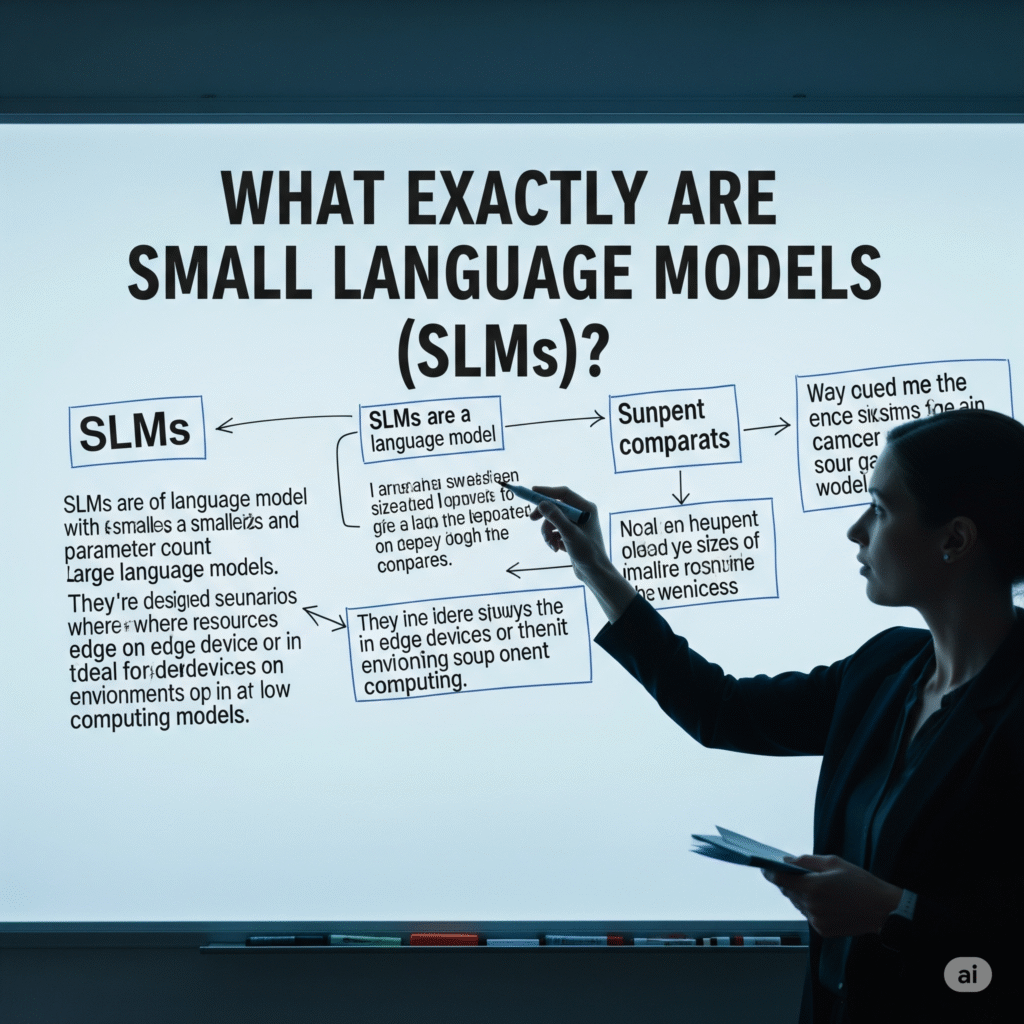
What Exactly Are Small Language Models (SLMs)?
Think of Large Language Models (LLMs) like GPT-4 or Claude 3 Opus as a massive, comprehensive library containing knowledge on virtually every topic imaginable. They are incredibly powerful but require enormous data centers and computational power to operate.
Small Language Models (SLMs), on the other hand, are like specialized, expert handbooks. They are trained on smaller, more focused datasets, making them significantly more compact and efficient. While an LLM might have hundreds of billions or even trillions of parameters (the variables the model uses to make predictions), an SLM typically has parameters in the single-digit billions or millions. This “small” size is their greatest strength.
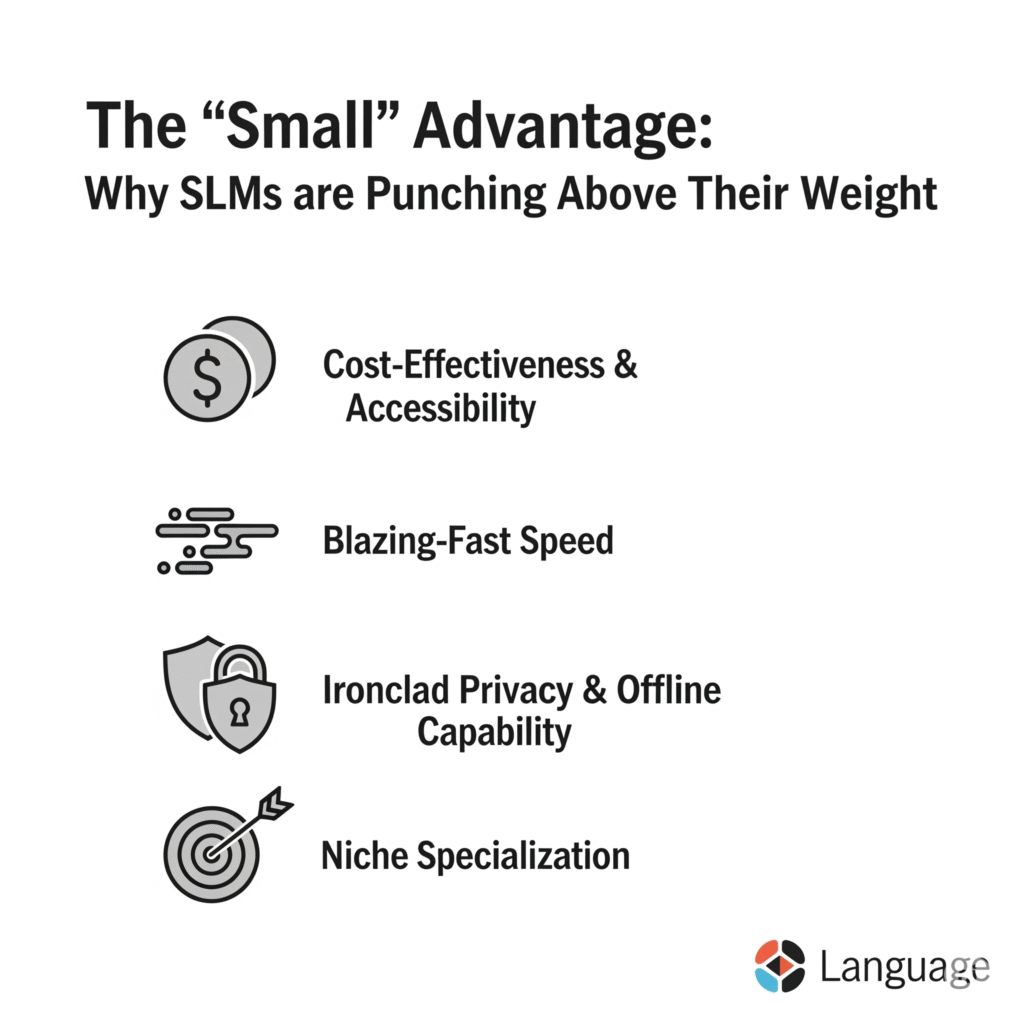
The ‘Small’ Advantage: Why SLMs are Punching Above Their Weight 💪
The shift towards SLMs isn’t just about downsizing; it’s about unlocking new possibilities that were impractical with giant models.
Cost-Effectiveness & Accessibility 💰
Training and running a massive LLM can cost millions of dollars. SLMs slash these costs dramatically, making custom AI accessible to smaller businesses, startups, and even individual developers. This democratization of AI is a game-changer.
Blazing-Fast Speed ⚡
Because they are smaller, SLMs can process information and generate responses much faster. This is crucial for real-time applications where lag is unacceptable, such as interactive chatbots or on-the-fly language translation within an app.
Ironclad Privacy & Offline Capability 🔒
This is perhaps the biggest paradigm shift. SLMs can run directly on your personal devices—your smartphone, laptop, or even your car. This is called on-device processing. Your data never has to be sent to a cloud server, significantly enhancing your privacy. Plus, it means the AI can work even when you’re offline.
Niche Specialization 🎯
SLMs can be fine-tuned to become experts in very specific domains. Imagine an SLM trained exclusively on medical terminology for a doctor’s transcription app or one that knows your smart home’s devices inside and out. This specialization often leads to higher accuracy for dedicated tasks compared to a generalist LLM.
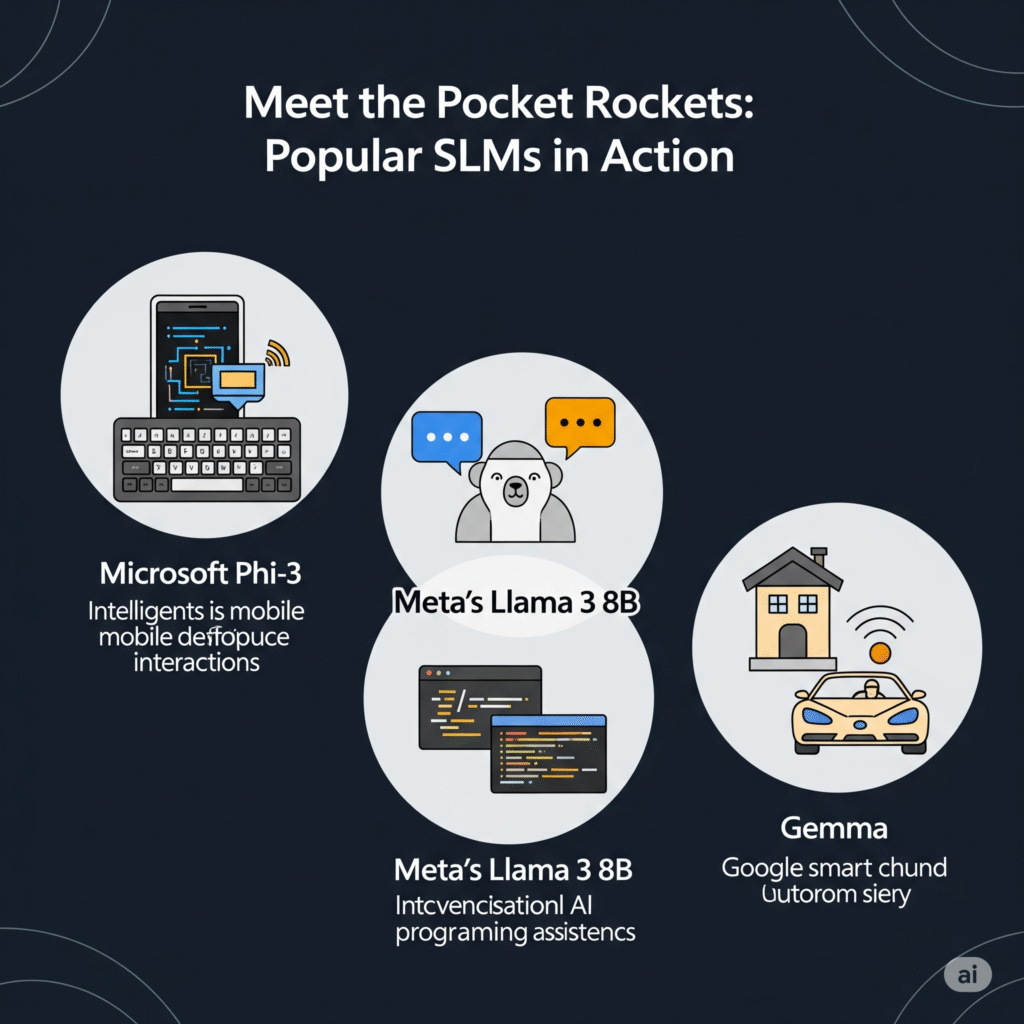
Meet the Pocket Rockets: Popular SLMs in Action 🚀
SLMs aren’t just theoretical; they are already here and making an impact.
- Microsoft’s Phi-3 Family: The Phi-3 models are a great example of incredible performance in a tiny package. The smallest version, Phi-3-mini, is designed to run efficiently on mobile phones.
- Real-World Use: Powering intelligent keyboards that offer better suggestions, summarizing long emails directly within your phone’s app, or enabling accessibility features for users with disabilities without needing an internet connection.
- Meta’s Llama 3 8B: The 8-billion parameter version of Llama 3 is a highly capable open-source SLM. It’s powerful enough for complex reasoning but small enough to be run by developers on consumer-grade hardware.
- Real-World Use: Creating highly responsive customer service chatbots for websites, developing interactive educational tools that can run on school computers, or coding assistants that help programmers write and debug code faster.
- Google’s Gemma: Google has also released a family of open models, with smaller 2B and 7B versions that are perfect for on-device applications and research.
- Real-World Use: Smart home devices that can understand and execute complex commands locally (e.g., “Dim the living room lights and play my evening playlist when I walk in”), or powering next-generation in-car assistants that are faster and more private.
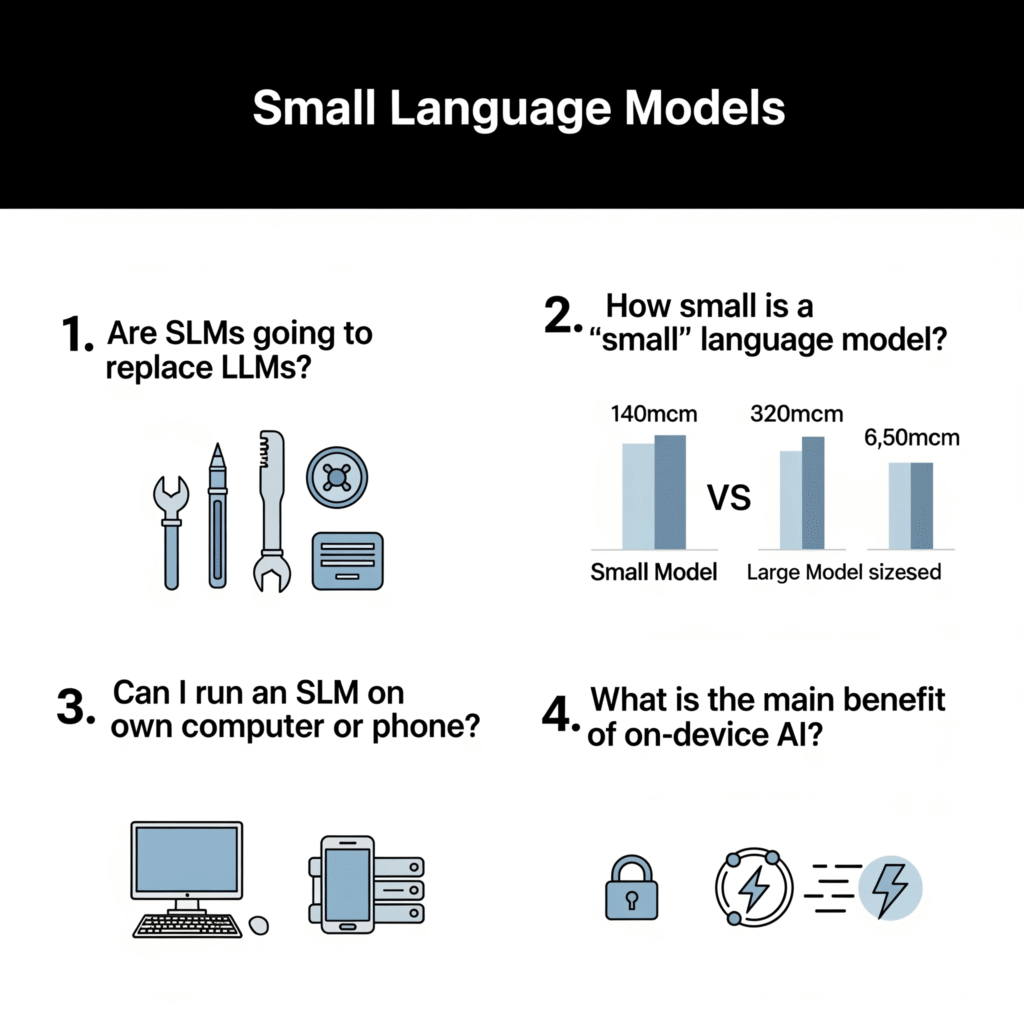
Frequently Asked Questions (FAQ)
Q1: Are SLMs going to replace LLMs?
Not at all. Think of them as different tools for different jobs. LLMs will continue to be essential for large-scale, complex research and tasks requiring a vast breadth of knowledge. SLMs are designed for efficiency, speed, and specialized tasks, particularly on personal devices. They will coexist and complement each other.
Q2: How small is a “small” language model?
There’s no strict definition, but generally, models with fewer than 10-15 billion parameters are considered “small” in today’s landscape. For comparison, large models like GPT-4 are rumored to have over a trillion parameters.
Q3: Can I run an SLM on my own computer or phone?
Yes! This is one of their primary advantages. Many open-source SLMs like Llama 3 8B or Phi-3 can be run on modern laptops, desktops, and even some high-end smartphones, opening up a new world of personal AI experimentation.
Q4: What is the main benefit of on-device AI?
The two main benefits are privacy and speed. Since your data is processed locally on your device and not sent to a company’s server, it remains private. It’s also much faster because there’s no network delay (latency) from sending data back and forth to the cloud.
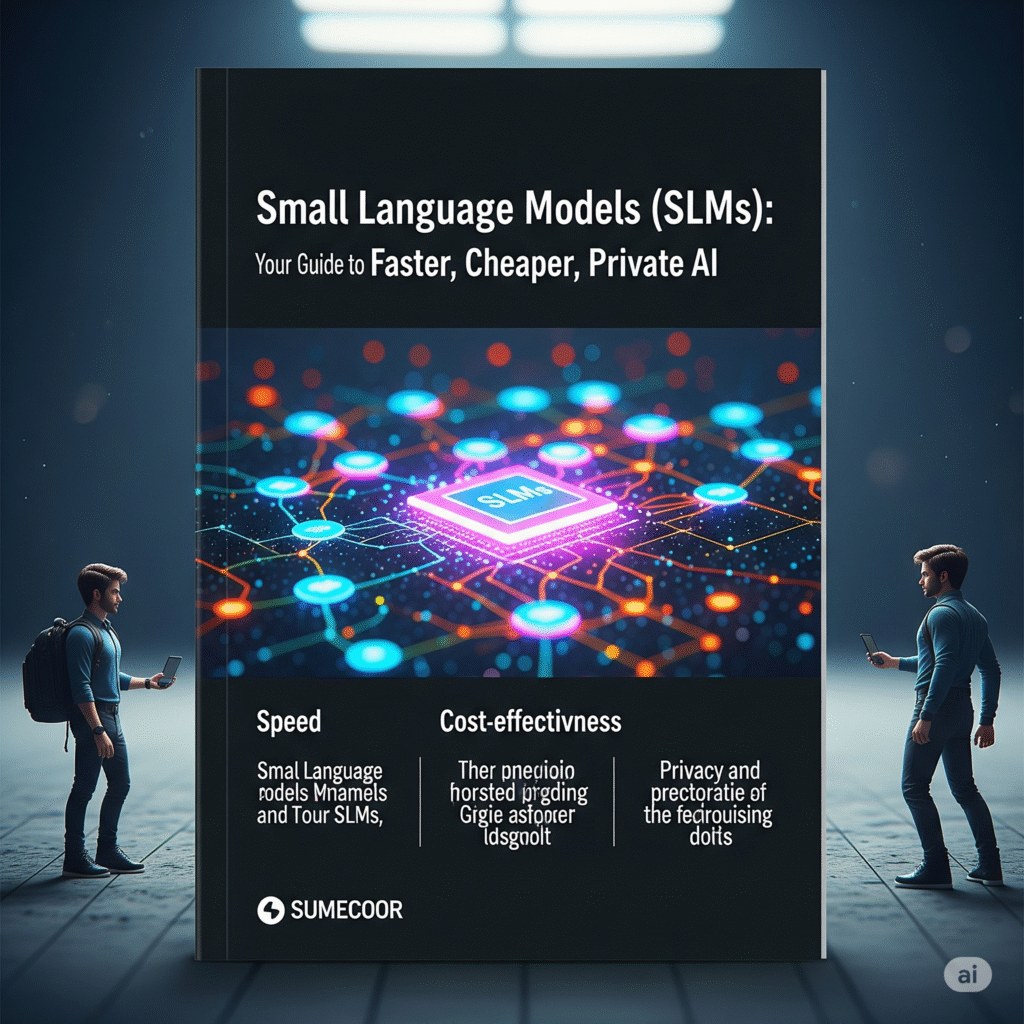


What I find especially interesting about the rise of SLMs is how their smaller size opens doors for nicheSLM Blog Comment Strategy specialization. Instead of relying on a one-size-fits-all LLM, organizations could deploy SLMs fine-tuned for healthcare, finance, or even internal knowledge bases—while keeping data private. It feels like we’re moving toward a future where AI is both more accessible and more purpose-built.